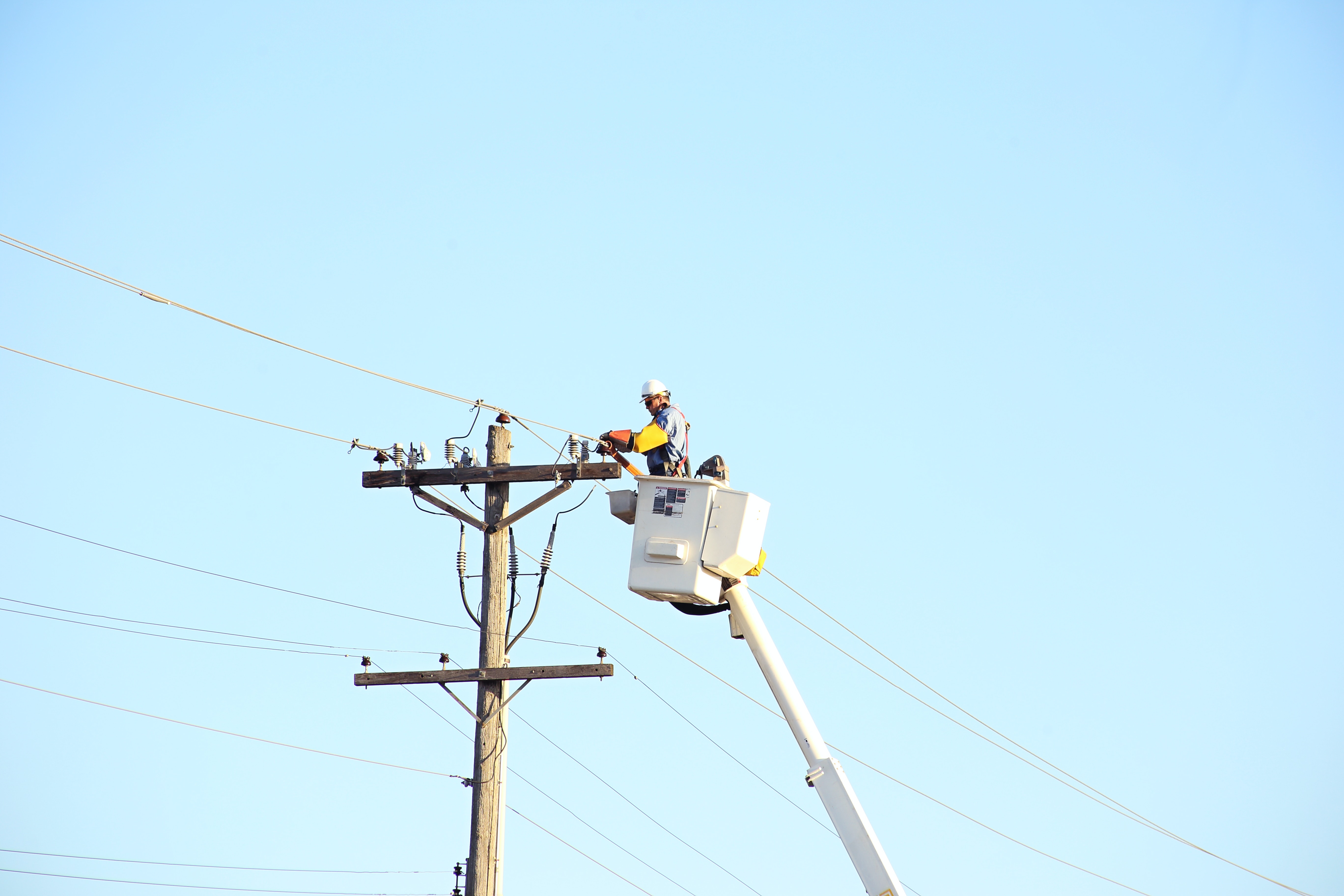Maryland Debt Relief: How to Qualify for Loan Forgiveness
Living with debt can feel like an endless cycle of anxiety and frustration, but there is hope. Maryland Debt Relief options offer a lifeline to individuals and families overwhelmed by their financial burdens. So, if you're ready to say goodbye to sleepless nights and hello to financial freedom, keep reading to discover how Maryland Debt Relief can transform your life.

Table of Contents
- Debt Statistics in Maryland
- Are There Government-Backed Debt Relief Programs in Maryland?
- How to Apply for Maryland Public Service Loan Forgiveness (PSLF)
- What are the Laws Related to Debt in Maryland
- How does the FDCPA add to Maryland Debt-Related Laws
- What is the Statute of Limitations on Debt Collection in Maryland?
- How does a Debt Relief Program Work?
- Public Assistance Programs in Maryland
- How Everything Home Owner Can Help with Debt Relief in Maryland
Debt Statistics in Maryland
Cost of Living in Maryland
The cost of living in Maryland can vary depending on the specific area within the state, but overall, it tends to be higher than the national average. According to the Consumer Price Index (CPI), which measures changes in the prices of goods and services, Maryland's cost of living index is 306.51 as of June 2023. This means that, on average, Maryland residents can expect to pay about 0.2% more for goods and services compared to the national average.
Debt Levels in Maryland
In terms of debt, Maryland residents have a slightly higher average debt compared to the national average. According to Business Insider, the average total debt per person in Maryland is $76,520, while the national average is $59,580. This includes debt from mortgages, credit cards, auto loans, and student loans. That means that Marylanders are on average, 28% more in-debt than the average American.

Salaries in Maryland
When it comes to salaries, Maryland residents earn higher average incomes compared to the national average. According to the U.S. Bureau of Labor Statistics, the average yearly wage in Maryland is $69,750 as of the December 2022, while the national average is $61,900. This higher income can help offset the slightly higher cost of living in the state.
It's worth noting that these statistics are averages and can vary depending on individual circumstances and geographic location within Maryland. Additionally, debt and income levels can also be influenced by factors such as education, occupation, and personal financial choices.
Related Reading
• Washington Debt Relief• Debt Relief California
• Virginia Debt Relief
• Florida Debt Relief
• Texas Debt Relief
• New York Debt Relief
• New Jersey Debt Relief
Are There Government-Backed Debt Relief Programs in Maryland?
Debt relief programs can provide much-needed assistance to individuals who are struggling with their financial obligations. In Maryland, there are several government-backed debt relief programs available that can help individuals manage and alleviate their debts. Below, I will outline each program and the qualifications required to participate.
Maryland Mortgage Program (MMP)
The Maryland Mortgage Program is a state initiative that aims to provide affordable home loans to low and moderate-income residents. While it may not directly address existing debts, it can help individuals with high mortgage payments by providing more affordable options. To qualify for the MMP, applicants must meet certain income limits, have a good credit score, and complete a homebuyer education course.
Maryland Foreclosure Mediation Program
The Maryland Foreclosure Mediation Program is designed to assist homeowners facing foreclosure by facilitating communication and negotiation between borrowers and lenders. Eligibility for this program requires the property to be the individual's primary residence and the borrower must have received a foreclosure notice. Participation in the program can help individuals explore alternatives to foreclosure and potentially negotiate more favorable terms for their mortgage.

Student Loan Debt Relief Tax Credit
The Student Loan Debt Relief Tax Credit is a program aimed at providing financial assistance to individuals burdened by student loan debt. Eligible applicants must have incurred at least $20,000 in undergraduate or graduate student loan debt and have a Maryland taxable income of less than $200,000 (or less than $250,000 if filing jointly). The tax credit provides a maximum benefit of $5,000 per year for up to five years, helping to alleviate the financial strain of student loan repayments.
Maryland Energy Assistance Program (MEAP)
The Maryland Energy Assistance Program provides financial assistance to low-income individuals and families to help offset the cost of heating and cooling their homes. While not a direct debt relief program, it can free up funds that can be allocated towards paying off debts. Eligibility for MEAP is based on income and household size, and applicants must provide documentation to demonstrate their need.
Maryland Debt Management Program
The Maryland Debt Management Program, administered by the Office of the Commissioner of Financial Regulation, aims to help individuals struggling with debt by negotiating with creditors to reduce interest rates and consolidate debts into manageable monthly payments. To qualify for this program, individuals must demonstrate that they are facing financial hardship and unable to meet their debt obligations. Participants must also complete a debt counseling session as part of the program requirements.
These are just a few of the government-backed debt relief programs available in Maryland. Each program has its own specific qualifications and requirements, so it's important for individuals to thoroughly research and understand the eligibility criteria before applying. By taking advantage of these programs, individuals can find much-needed relief from their debts and work towards achieving financial stability.
How to Apply for Maryland Public Service Loan Forgiveness (PSLF)
The Maryland Public Service Loan Forgiveness (PSLF) program is a state-specific program that aims to provide debt relief to individuals working in public service professions. The program is designed to help borrowers who are struggling with student loan debt by forgiving a portion of their loans.
To qualify for the Maryland PSLF program, individuals must meet certain criteria.
- First, they must be employed full-time in a public service profession in the state of Maryland. This includes working for a government organization, a non-profit organization, or an educational institution.
- The borrower must have made 120 qualifying payments on their loans while working in a public service profession. These payments must be made under a qualified repayment plan, such as an income-driven repayment plan.
- Additionally, the borrower must have a remaining loan balance after making the 120 qualifying payments.

To apply for the Maryland PSLF program, individuals need to complete an application form and submit it to the Maryland Higher Education Commission (MHEC). The form requires borrowers to provide information about their employment, loan repayment history, and loan balance. They will also need to submit supporting documentation, such as proof of employment and payment history.
It is important for borrowers to carefully review the eligibility requirements and application process before applying for the program. The MHEC website provides detailed information and resources for borrowers, including frequently asked questions and contact information for additional assistance.
In conclusion, the Maryland Public Service Loan Forgiveness program is a valuable resource for individuals working in public service professions in Maryland who are struggling with student loan debt. By meeting the eligibility criteria and completing the application process, borrowers may be eligible to have a portion of their loans forgiven, providing much-needed debt relief.
What are the Laws Related to Debt in Maryland
The Maryland Debt Collection Act is a set of laws designed to protect borrowers from aggressive and unfair debt collection practices. These laws provide specific protections to borrowers, ensuring that they are treated fairly and are not subjected to harassment or abuse by creditors.
Prohibiting Harassment & Abuse
One of the key protections offered by the Maryland Debt Collection Act is the prohibition of harassment and abuse. Under this law, debt collectors are not allowed to use threats, intimidation, or profane language when trying to collect a debt. They cannot call borrowers repeatedly with the intention of annoying or harassing them, nor can they publish a list of debtors who refuse to pay their debts.
Disclosure of Important Information
When contacting a borrower, debt collectors must identify themselves, state the purpose of their call, and disclose the fact that they are attempting to collect a debt. They must also provide the borrower with the name and address of the creditor, as well as the amount of the debt owed.
Dispute the Validity of Debt
The Maryland Debt Collection Act allows borrowers to dispute the validity of a debt. If a borrower believes that a debt is not valid or that the amount being claimed is incorrect, they have the right to dispute it. The debt collector must then provide verification of the debt, such as a copy of the original contract or a detailed statement of the account.

Cease & Desist Communication
Furthermore, the Maryland Debt Collection Act includes provisions for debt collectors to cease communication at the borrower's request. If a borrower notifies a debt collector in writing that they do not wish to be contacted further, the debt collector must respect that request and cease all communication, except to provide notification of specific legal actions.
How does the FDCPA add to Maryland Debt-Related Laws?
The Fair Debt Collection Practices Act (FDCPA) works in conjunction with the Maryland Collection Agency Act and Maryland Debt Collection Act to provide additional protections to borrowers. While the state-level laws in Maryland focus on regulating debt collection practices within the state, the FDCPA provides a broader set of protections that apply nationwide.
Strict Guidelines on Communication Standards
One key way the FDCPA complements the Maryland Collection Agency Act and Maryland Debt Collection Act is by setting strict guidelines for how debt collectors can communicate with borrowers. Under the FDCPA, debt collectors are prohibited from engaging in harassing, abusive, or deceptive practices. This includes actions such as making repeated or excessive phone calls, using threatening or obscene language, or misrepresenting the amount owed. These protections are in addition to those provided by the Maryland Collection Agency Act and Maryland Debt Collection Act, which also regulate debt collection practices but are specific to the state of Maryland.
Related Reading
• Pennsylvania Debt Relief
• Wisconsin Debt Relief
• Arizona Debt Relief
• Maryland Debt Relief
• Massachusetts Debt Relief
• Illinois Debt Relief
• Michigan Debt Relief
What is the Statute of Limitations on Debt Collection in Maryland?
Maryland, like other states, has specific statutes of limitations for consumer debt. These limitations set a time frame within which creditors can legally sue consumers for the collection of debts. In Maryland, the statute of limitations for consumer debt is three years for various types of debts, including credit cards, spoken contracts, and written contracts.
The purpose of having a statute of limitations is to provide a reasonable timeframe for creditors to take legal action against debtors. After this time period has passed, creditors are no longer able to file a lawsuit to collect the debt. This protects consumers from being indefinitely pursued for debts that may have become unmanageable or even forgotten over time.
Statute of Limitations
For credit card debts in Maryland, the statute of limitations is three years. This means that if a consumer has not made a payment on their credit card debt for three years, the creditor cannot sue them to recover the debt. Similarly, for spoken contracts and written contracts, the statute of limitations is also three years. However, if the written contract is under seal, the statute of limitations extends to 12 years.
Exempt $6,000 from Account Levy
In addition to the statute of limitations, Maryland also has certain exemptions and protections in place for its residents facing debt issues. For example, Maryland residents are allowed to exempt up to $6,000 from an account levy. This means that if a creditor obtains a judgment against a debtor and attempts to freeze their bank account, the debtor can protect up to $6,000 of their funds from being seized.
Wage Garnishment
Furthermore, Maryland allows for wage garnishment but provides significant protection to debtors. Under Maryland law, creditors can garnish up to 25% of a debtor's net wages. However, the state exempts 75% of the debtor's net wages from garnishment, ensuring that they have enough income to meet their basic living expenses.
It is important for Maryland residents facing debt issues to be aware of these nuances in the statutes of limitations and exemptions. Understanding these laws can help individuals navigate their debt situation more effectively and protect their rights and assets within the bounds of the law.
How does a Debt Relief Program Work?
A debt relief program is designed to help individuals or businesses struggling with debt to regain control of their finances and reduce their overall debt burden. These programs typically involve negotiating with creditors to obtain more favorable terms, such as lower interest rates or reduced balances, and creating a manageable repayment plan.
In general, the debt relief process begins with a thorough assessment of the individual's financial situation. This includes gathering information about their income, expenses, and outstanding debts. Based on this assessment, a debt relief expert will create a customized plan to address their specific needs and goals.
Debt Consolidation
One common debt relief option is debt consolidation, which involves combining multiple debts into a single loan with a lower interest rate. This can simplify the repayment process and potentially save money on interest charges. For example, let's say an individual in Maryland has multiple credit card debts with high interest rates. They may choose to take out a debt consolidation loan to pay off these debts, and then make a single monthly payment towards the loan.

Debt Settlement
Another option is debt settlement, which involves negotiating with creditors to settle the debt for less than the full amount owed. For example, let's say an individual in Maryland has a large amount of medical debt. They may work with a debt relief company to negotiate with the medical provider to settle the debt for a reduced amount. The individual would then make a lump sum payment to the creditor to settle the debt.
Bankruptcy
Bankruptcy is another option for debt relief, although it should be considered as a last resort due to its long-term impact on credit. In Maryland, bankruptcy laws may vary from other states, so it's important to consult with a bankruptcy attorney who is knowledgeable about Maryland's specific laws and regulations.
The specific steps in a debt relief program can vary depending on an individual's financial situation. For example, if someone in Maryland is facing a temporary financial hardship, such as a job loss or medical emergency, they may qualify for a temporary payment reduction or deferment until their financial situation improves. On the other hand, if an individual has a substantial amount of debt and is struggling to make even minimum payments, a more aggressive debt relief strategy may be necessary, such as debt settlement or bankruptcy.
Related Reading
• Tennessee Debt Relief
• Debt Relief Programs Georgia
• Indiana Debt Relief
• Missouri Debt Relief
• Ohio Debt Relief Programs
• NC Debt Relief
Public Assistance Programs in Maryland
Here is a list of financial assistance programs in Maryland for Debt Relief:
1. Maryland Homeowners' Property Tax Credit (PTC) Program:
The PTC program is designed to help homeowners with high property tax bills reduce their financial burden. Eligible homeowners can receive a credit on their property tax bill, based on their income and the amount of property taxes paid. This program can provide significant relief for individuals struggling with debt by lowering their overall expenses.
2. Maryland Energy Assistance Program (MEAP):
MEAP assists low-income households with their heating and cooling costs. Eligible individuals can receive financial assistance to pay their utility bills, reducing their overall expenses and freeing up money to allocate towards debt repayment.
3. Maryland Renters' Tax Credit Program:
This program is targeted at low-income renters who face high rent costs. Eligible renters can receive a tax credit based on their income and rent paid, providing financial relief and allowing them to allocate more funds towards debt repayment.
4. Maryland Child Care Subsidy Program:
The Child Care Subsidy Program helps low-income families afford quality childcare services. By subsidizing a portion of the childcare costs, this program reduces the financial burden on families, enabling them to direct more money towards debt repayment.
5. Maryland Legal Services Corporation (MLSC):
MLSC provides free legal assistance to low-income individuals who cannot afford legal representation. This program can be particularly helpful for individuals facing debt-related legal issues, such as bankruptcy or foreclosure proceedings. Through MLSC, individuals can access professional legal advice and representation without incurring additional financial strain.
List of Social Assistance Programs in Maryland for Debt Relief
1. Maryland Food Supplement Program (FSP):
The FSP, also known as SNAP or food stamps, provides eligible individuals and families with funds to purchase nutritious food. By reducing grocery expenses, this program allows individuals to allocate more money towards debt repayment.
2. Maryland Temporary Cash Assistance (TCA) Program:
The TCA program provides financial assistance to low-income families with dependent children. By providing cash benefits, this program helps families cover their basic needs, reducing the financial pressure and allowing them to focus on debt repayment.
List of Food Assistance Programs in Maryland for Debt Relief:
1. Maryland Food Bank:
The Maryland Food Bank operates various programs and partner agencies that distribute food to individuals and families in need. By accessing these resources, individuals can reduce their food expenses, freeing up money to allocate towards debt repayment.
2. Meals on Wheels:
Meals on Wheels delivers nutritious meals to seniors who are unable to prepare food for themselves. By receiving these meals, seniors can reduce their grocery expenses, enabling them to allocate more funds towards debt repayment.
List of Housing Assistance Programs in Maryland for Debt Relief:
1. Maryland Emergency Assistance (EA) Program:
The EA program provides emergency financial assistance to individuals and families facing eviction, utility shutoffs, or other housing crises. By offering immediate relief, this program helps individuals stabilize their housing situation and avoid further debt accumulation.
2. Maryland Mortgage Assistance Program (MAP):
MAP assists homeowners who are at risk of foreclosure by providing financial assistance to bring their mortgages current. By preventing foreclosure, this program helps individuals avoid additional debt and regain control of their finances.
3. Maryland Energy Assistance Program (MEAP):
In addition to providing assistance with heating and cooling costs, MEAP also offers weatherization services to improve energy efficiency in homes. By reducing energy bills, individuals can allocate more money towards debt repayment.
4. Maryland Eviction Prevention Partnership (MEPP):
MEPP is a collaborative effort between various organizations that provide legal and financial assistance to tenants facing eviction. By offering legal representation and financial support, this program helps individuals avoid eviction and the associated debt repercussions.
It is essential for individuals seeking debt relief in Maryland to research and contact these programs directly to determine their eligibility and the specific application process.
How Everything Home Owner Can Help with Debt Relief in Maryland
If you're a Maryland consumer burdened by debt, you're not alone. Many people find themselves facing financial challenges and are unsure of where to turn for help. That's where EverythingHomeOwner.com comes in. By connecting with one of their qualified debt relief counselors, Maryland consumers can get the assistance they need to address their debt concerns.
EverythingHomeOwner.com understands the unique financial landscape in Maryland and the challenges that consumers face when it comes to debt relief. Their team of experienced counselors is equipped with the knowledge and resources to provide personalized guidance and support.
When you connect with a debt relief counselor through EverythingHomeOwner.com, you can expect a comprehensive approach to debt relief. They will work with you to understand your specific financial situation, including your income, expenses, and outstanding debts. This allows them to tailor a debt relief plan that meets your needs and helps you achieve your financial goals.
